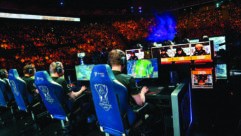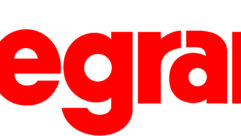
Market Opening in Connected Home Service
Dec 1, 2008 12:00 PM,
By Rebecca Day

Future of Television conference, New York
Who will provide support in the connected home is a simmering debate among service providers, according to panelists at the recent Future of Television conference in New York. The convergence of PC, TV, and software-based services are creating a rocky landscape that no one has figured out how to traverse.
Service and tech support are a “train wreck” waiting to happen, according to Brian Whitton, executive director of access technologies at Verizon’s Fiber Optics Services (FiOS) group. “If a consumer calls Verizon because they lost content on their PC, how are you going to answer?” he says. “You don’t.”
To minimize those types of scenarios, FiOS systems come with dedicated routers so that FiOS doesn’t get the service calls when consumers have issues with store-bought routers. “You’d be surprised at the number of calls that come in from people who forgot their WEP key,” says Whitton. The Verizon router includes remote management so that the company can remotely manage system performance 24/7.
The emergence of DLNA-enabled products (Digital Living Network Alliance) will bring those issues to the forefront as DLNA expands its reach over the next few years. Who will support product in a DLNA world?
Richard Bullwinkle, chief evangelist at Macrovision suggested that a third-party Geek Squad-like support company could emerge. A former TiVo executive, Bullwinkle says, “I can’t tell you how many stories we had when the cable guy would come out and ‘fix’ the cable by unhooking TiVo.” To make the whole electronic home work, he says, is a difficult thing. “None of us can be an expert on all the technologies in the home.”
Michael Hawkey, VP of sales and marketing at EchoStar, says the video service providers and PC makers are poised to clash in the DLNA world. “When I get the two to connect and talk via DLNA and then Microsoft pushes an update—and all of a sudden I’ve lost all my videos in the DVR because I can’t talk to the DVR in the PC from the Verizon FiOS system—that’s the scariest part for us, he says. “Do I call Best Buy or Verizon? When I say, ‘I lost the content on my PC that I was watching on the FiOS system,’ how do you, as a service provider, answer that?”
The disparate sources providing content to consumers will require a consistent interface, too, for consumers to embrace connected technology, panelists noted. “Every CE manufacturer believes that their interface is better,” says Bullwinkle, which makes it difficult for manufacturers to agree on a common UI. He also says the stack of set-top boxes is no longer a viable option for consumers and that a single box will have to perform many functions. “Consumers will learn one new interface for their new box but they won’t be willing to learn a new interface for every application within it,” he says.
Kurt Scherf, VP and research analyst for Parks Associates, presented findings of a Parks survey covering what consumers want from their video experience. In a survey of 21 advanced TV perks, the top wish-list feature is the ability to have primetime TV anytime, anywhere. Also among the top features were Caller ID on TV and multiroom DVR. Panelists were surprised to learn that some consumers are willing to pay as much as $2-$3 a month to have Caller ID numbers pop up on the TV screen.
And although consumers are clamoring for wireless TV to eliminate the wiring mess behind the flatpanel TV, service providers don’t see wireless taking off any time soon. Problematic construction—such as stone walls or competing transmissions in a high-rise condo building—is just one obstacle, they noted.
“Wireless is a wonderful technology for portability,” says Whitton, adding that most people aren’t aware that wireless in a home performs poorly because of signal fade. “If you’re watching a football game in the last 30 seconds and Junior walks across and your signal fades out, you’re probably going to be a disgruntled customer. Customers want to be able to count on service behaving consistently 100 percent of the time. Having it work 70-80 percent of the time isn’t going to be an acceptable business model.”










